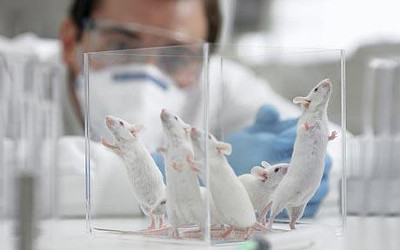AKIPRESS.COM -  Scientists have discovered the brains and muscles of old mice rejuvenate after they receive the blood of younger ones. The miracle protein responsible is also found in humans, RT reported.
Scientists have discovered the brains and muscles of old mice rejuvenate after they receive the blood of younger ones. The miracle protein responsible is also found in humans, RT reported.
The Sunday discoveries are the culmination of three separate studies, and if found to apply to humans, will mean that a simple blood transfusion could eventually make our brains and muscles as youthful as those of teenagers.
The first two studies focused on collaborations at the Harvard Stem Cell Institute and dealt with muscle and brain function rejuvenation. They were intended to demonstrate that the age-related decline in brain function is reversible, as neuron production was boosted and brains were found to change molecular structure in response to the treatment.
The third study, from Stanford University and the University of California San Francisco, also worked in that area, largely focusing on a protein in the blood of young mice, which made older mice – equivalent to 70 human years of age – more ready to take on mental and physical strain.
The miracle component is a growth differentiation factor in the blood called GDF11, whose high levels are associated with youthful strength and a sharp brain. Levels of GDF11 were found to decline with age in mice. Although the existence of this factor was studied in previous works, the new studies prove that its effects aren’t limited to heart tissue, but also work for the brain. Scientists also discovered that direct injections of young blood have the same effect on an older mouse as hooking its blood circulation system up to a younger mouse’s does.
The discovery proves there are “factors in the blood that are age-dependent, and if you can isolate these substances you might be able to give them as dietary supplements,” said Eric Kandel of Columbia University, one of the neuroscientists awarded the 2000 Nobel Prize for work on the molecular basis of memory.
Previous attempts showed the same type of transfusion in mice works just as well in reverse. When young mice were given the blood of old ones, their own youthful functioning became considerably more sluggish.
The actual method of connecting blood systems of old and young mice came about in the first paper, penned by Lee Rubin of Harvard University. His team wrote that “regardless of the age of the old brain... young blood is still able to rejuvenate the aged brain.”
Even under a microscope, physical differences in the appearance of the brain after this procedure of rejuvenation were quite visible; structural and molecular differences were spotted. So was the rise in chemicals associated with learning and the quality of connections that neurons establish between each other – all markers of youth.
The miraculous effects of GDF11 have been found to be consistent between mice and human beings. But researchers believe there’s still a long way to go before human experiments can take place. Although the effects of GDF11 on human blood could easily become apparent through blood transfusions, the fact that they are anonymous has made it impossible to monitor.
